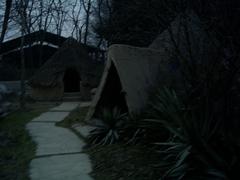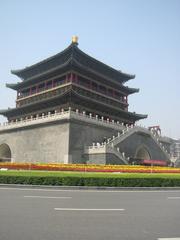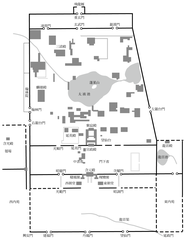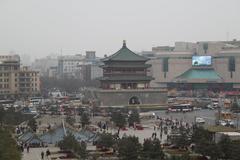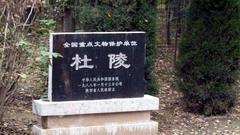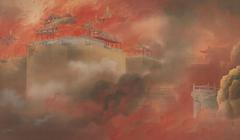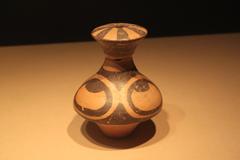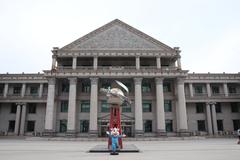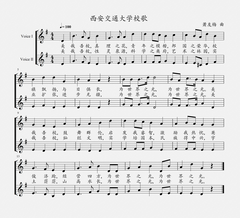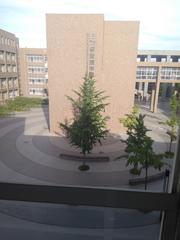Xiangji Temple Visiting Hours, Tickets, and Historical Sites Guide in Xi’an
Date: 14/06/2025
Introduction
Xiangji Temple (香积寺) in Xi’an is a prominent monument of Chinese Buddhist heritage and Tang Dynasty architecture. Founded in 681 CE to honor Master Shandao—the founder of Pure Land Buddhism in China—the temple stands as both a spiritual sanctuary and a living museum of Chinese religious history. Today, Xiangji Temple is celebrated for its enduring traditions, architectural beauty, and as a tranquil escape amid Xi’an’s historic landscape.
This comprehensive guide provides detailed insights into Xiangji Temple’s history, architectural highlights, cultural significance, practical visitor information, and travel tips, all designed to help you make the most of your visit to this essential Xi’an historical site (ChinaTourStar; Wikipedia; China Discovery).
Table of Contents
- Introduction
- Xiangji Temple: Historical Overview
- Architectural and Cultural Highlights
- Visiting Xiangji Temple: Essential Information
- Nearby Attractions in Xi’an
- Travel Tips and FAQs
- Conclusion
- References
Xiangji Temple: Historical Overview
Founding and Tang Dynasty Significance
Xiangji Temple was established in 681 CE during the reign of Emperor Gaozong of the Tang Dynasty, in memory of Master Shandao (613–681), a key architect of Pure Land Buddhism. The temple’s name, meaning “Accumulated Fragrance,” is drawn from the Vimalakirti Sutra and symbolizes the merit and virtue cultivated through Buddhist practice (Wikipedia; ChinaTourStar).
Under imperial patronage, Xiangji Temple became one of the Eight Grand Temples of Fanchuan, central to the religious and cultural life of the Tang capital, Chang’an. The temple’s influence extended to Japan, shaping the Japanese Jōdo-shū and Jōdo Shinshū schools (ChinaTourStar).
Periods of Turmoil and Restoration
The temple suffered significant damage during the An Lushan Rebellion (755–763) and the Great Anti-Buddhist Persecution of 845, with many relics lost or destroyed (Wikipedia). Restoration efforts during the Song, Ming, and Qing dynasties revived Xiangji Temple’s stature as a religious and cultural landmark.
Modern Era Preservation
Recognized as a National Key Chinese Buddhist Temple, Xiangji Temple is protected and maintained as a living heritage site. It remains an active center for Buddhist ceremonies, community engagement, and cultural events (ChinaTourStar).
Architectural and Cultural Highlights
Principal Structures
- Shandao Pagoda: Built in 681 CE, this 33-meter, 11-story brick pagoda enshrines Shandao’s relics. Its unique vertical crack is reminiscent of Xi’an’s Small Wild Goose Pagoda (ChinaTourStar; China-Tour.cn).
- Jingye Pagoda: Honors Jingye, a prominent disciple of Shandao.
- Main Shrine Hall: Central axis design with classic Buddhist halls, including the Hall of Heavenly Kings, Drum and Bell Towers, and Dhammasala.
Artistic and Literary Heritage
The temple’s tranquil gardens and ancient ginkgo trees inspired Tang poet Wang Wei, whose poem “Visiting Xiangji Temple” immortalized its serene landscape (Wikipedia).
Ongoing Religious Role
Xiangji Temple is a center for Pure Land Buddhist worship, hosting daily chanting, meditation, and major festivals such as Buddha’s Birthday and the Laba Festival (ChinaTourStar).
Visiting Xiangji Temple: Essential Information
Hours and Ticketing
- Opening Hours: Generally open daily from 8:00 AM to 5:30 or 6:00 PM.
- Admission Fee: Around 40 RMB per adult. Discounts available for students, seniors, and children; children under a certain height or age may enter free.
- Ticket Purchase: Buy tickets at the entrance or via official tourism platforms; guided tours may incur additional fees.
Accessibility
- Mobility: The temple grounds feature paved paths and ramps, making most areas accessible. Some ancient sections may have steps or uneven surfaces.
- Assistance: Visitor center staff can provide help upon request.
Transportation and Directions
- By Public Transport: Bus lines 601, 609, 75, and 606 stop near the temple.
- By Taxi: About a 30-minute ride from Xi’an city center; provide the temple’s Chinese name and address to drivers.
- By Metro: No direct metro station; transfer to bus or taxi from the nearest metro stop.
- By Air/Train: From Xi’an Xianyang International Airport or Xi’an North Railway Station, use airport shuttle, taxi, or metro-bus combinations (China Discovery).
Best Times to Visit
- Seasons: Spring (March–May) and autumn (mid-September–early November) offer mild weather, fewer crowds, and beautiful gardens (China Discovery).
- Times to Avoid: National holidays and weekends can be crowded.
On-Site Facilities and Etiquette
- Restrooms: Available on-site.
- Shaded Areas: Ample trees and covered walkways.
- Shops: Small stalls sell incense, souvenirs, and religious items.
- Dress Code: Modest attire required (cover shoulders and knees).
- Photography: Permitted in outdoor areas; respect signage inside halls.
- Behavior: Maintain a quiet, respectful demeanor; remove hats/sunglasses in halls.
Nearby Attractions in Xi’an
- Giant Wild Goose Pagoda: UNESCO World Heritage Site and Buddhist landmark.
- Shaanxi History Museum: Showcases the region’s rich past.
- Ancient City Wall: Ideal for walking or cycling.
- Muslim Quarter: Renowned for vibrant food markets and cultural diversity.
Combine Xiangji Temple with these sites for a full day’s exploration (China Discovery).
Travel Tips and FAQs
Practical Tips
- Arrive Early: To enjoy a peaceful atmosphere.
- Weather Prep: Bring water, sun protection, and dress for the season.
- Language: English signage is limited; translation apps or basic Mandarin are helpful.
- Safety: Xi’an is generally safe; keep valuables secure and stay hydrated.
Frequently Asked Questions
Q: What are the Xiangji Temple visiting hours?
A: Generally 8:00 AM to 5:30/6:00 PM daily.
Q: How much are tickets?
A: Around 40 RMB per adult, with discounts for students and seniors.
Q: Is the temple wheelchair accessible?
A: Most areas are accessible via paved paths; assistance is available.
Q: Are guided tours available?
A: Yes, bookable on-site or through local agencies; check for language options.
Q: When is the best time to visit?
A: Spring and autumn offer the most pleasant weather and scenic beauty.
Conclusion
Xiangji Temple is a cornerstone of China’s Buddhist heritage and a living link to Xi’an’s spiritual and cultural legacy. Its combination of historical importance, architectural splendor, and tranquil ambiance makes it a must-visit destination for anyone exploring Xi’an’s historical sites. With practical knowledge of visiting hours, tickets, accessibility, and local tips, you can ensure a fulfilling and respectful visit.
For up-to-date information, guided tours, and travel inspiration, download the Audiala app and follow us on social media. Plan your visit to Xiangji Temple today and discover the enduring spirit of this ancient sanctuary.
References
- Xiangji Temple Xi’an: Visiting Hours, Tickets, and Historical Significance, 2025, ChinaTourStar (https://www.chinatourstar.com/xian-attraction/xiangji-temple.html)
- Xiangji Temple Xi’an: Visiting Hours, Tickets & Cultural Significance, 2025, Trip.com Moments (https://www.trip.com/moments/poi-xiangji-temple-76839)
- Xiangji Temple Visiting Hours, Tickets, and Guide to Xi’an Historical Sites, 2025, China Highlights (https://www.chinahighlights.com/xian/attraction/xiangji-temple.htm)
- Xiangji Temple Visiting Hours, Tickets, and Travel Guide to Xi’an Historical Sites, 2025, China Discovery (https://www.chinadiscovery.com/xian-tours/xian-transportation.html)
- Xiangji Temple (Shaanxi) Wikipedia, 2025 (https://en.wikipedia.org/wiki/Xiangji_Temple_(Shaanxi))
